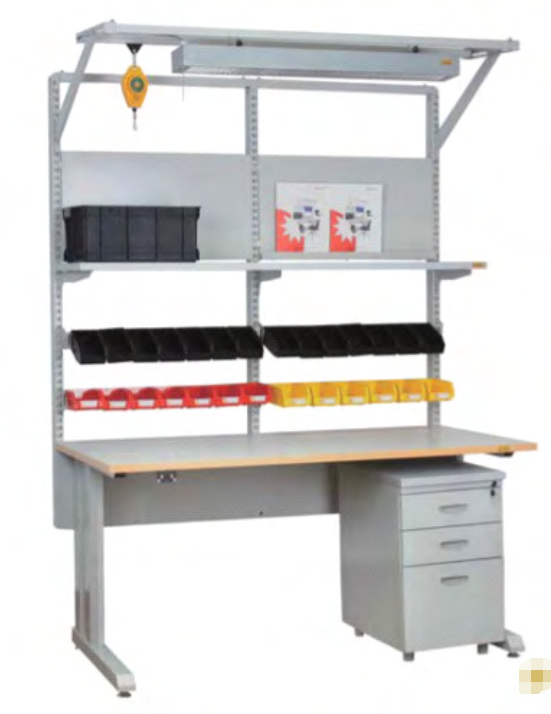Many industries including those which handle sensitive electronic components need to prioritize Electrostatic Discharge controls because of its importance. Successful control of electrostatic discharge requires immediate implementation because it protects product quality while reducing the expenses of accidental damage. The article analyzes fundamental ESD standards and certifications for workstations with detailed insights regarding ESD standards and certification processes and compliance audits and documentation.
Overview of Key ESD Standards
The workplace environment that manipulates electronic devices must be protected from electrostatic discharges based on ESD standards. The ESD standards define precise set of guidelines for materials together with handling protocols which establish protective measures against ESD hazards.
ANSI/ESD S20.20 Explained
ANSI/ESD S20.20 represents a prominent ESD standard that the Electrostatic Discharge Association (ESDA) published. An ESD control program framework exists in its entirety through ANSI/ESD S20.20. Organizations with electronic device and assembly production, processing, handling, packaging and repair operations need to implement ESD control measures at all manufacturing stages according to this standard.
Key elements of ANSI/ESD S20.20 include:
●ESD Control Program Plan (ECPP): An effective ESD control program requires an ECPP as its base which establishes necessary protocols for controlling ESD dangers through equipment materials and processes.
●Person-Grounding: The effective grounding of personnel who handle ESD-sensitive items is achieved through proper utilization of wrist straps and foot grounders and ESD-safe footwear.
●Workstation Grounding: The grounding of workstations requires proper implementation with ESD-safe surfaces and ESD-safe mats for the workspace.
●Packaging and Material Handling: The standard specifies ESD protective packaging materials which must be used for component protection throughout shipping and storage.
●Training and Awareness: Training sessions and awareness programs must be conducted for personnel to improve their ESD control proficiency and increase their perpetual attention levels.
IEC 61340-5-1 Requirements
The International Electrotechnical Commission (IEC) established the vital standard designated as IEC 61340-5-1. The requirements included in IEC 61340-5-1 provide ESD control procedures using a standardized approach that shows similarities to ANSI/ESD S20.20 although these standards employ different terminology and operational methods.
The ESD control system outlined in IEC 61340-5-1 adopts several requirements that direct its implementation.
●ESD Control Program Plan (ECP): A detailed plan entitled the ECP presents the same level of information as the ECPP by illustrating control measures and protocols for ESD.
●Work Area Design: The work area design specifies exact requirements for ESD safe zones which incorporate flooring types as well as work surfaces and sitting arrangements.
●Personal Equipment: Guidelines for the use of personal grounding devices and ESD-safe clothing.
●ESD Protected Area (EPA): An ESD Protected Area (EPA) specifies the defined spaces for handling sensitive devices which require rigorous ESD prevention measures during maintenance.
●Testing and Measuring: This section defines the need for scheduled tests alongside performance measurements of ESD control equipment and materials.
Achieving and Maintaining Certification
Organizations must complete several stages of assessment followed by audits and documentation-based proof of protocol adherence to achieve and keep ESD certification standards.
Certification Process Overview
Initial assessments serve as the first stage of certification since they detect currently implemented ESD controls and potential improvement areas. The assessment of ESD control programs commonly happens through cooperation with a certified third-party auditor or certification group.
The certification procedure consists of various milestones which begin with the following stages:
1.Gap Analysis: A thorough review to compare existing practices against the requirements of the relevant ESD standard (e.g., ANSI/ESD S20.20 or IEC 61340-5-1).
2.Implementation: During implementation organizations resolve detected deficiencies by either upgrading materials or enhancing training programs and improving grounding system methods.
3.Initial Audit: During the initial audit step which a certification body performs their responsibility is to verify standard requirements compliance.
4.Certification Decision: The certification body issues their decision to certify or non-certify the organization based on the results of the audit.
Compliance Audits and Documentation
Certified organizations need to preserve their ESD control systems by running regular audits while keeping complete documentation records.
●Compliance Audits: Organizations go through Compliance Audits each year through scheduled inspection procedures to sustain their compliance with established ESD standards. Organizations conduct internal audits as part of their ongoing effort to discover possible compliance issues in advance.
●Documentation: Organizations must keep complete documentation because it supports their initial certification and continuous adherence to standards.
oESD Control Program plans
oTraining records
oEquipment and material specifications
oAudit reports
oCorrective actions taken in response to audit findings
Maintaining proper documents not only ensures compliance, but also facilitates continuous improvement in ESD control practices.
Finally, understanding and implementing ESD standards such as Ansi/ESD S20.20 and IEC 61340-5-1 is important for any organization that deal with electronic components. Getting and maintaining certification requires a systematic approach for ESD control, regular audit and hardworking documentation. Following these standards ensures safety of sensitive devices, eventually protecting the quality of the product and organizational reputation.







